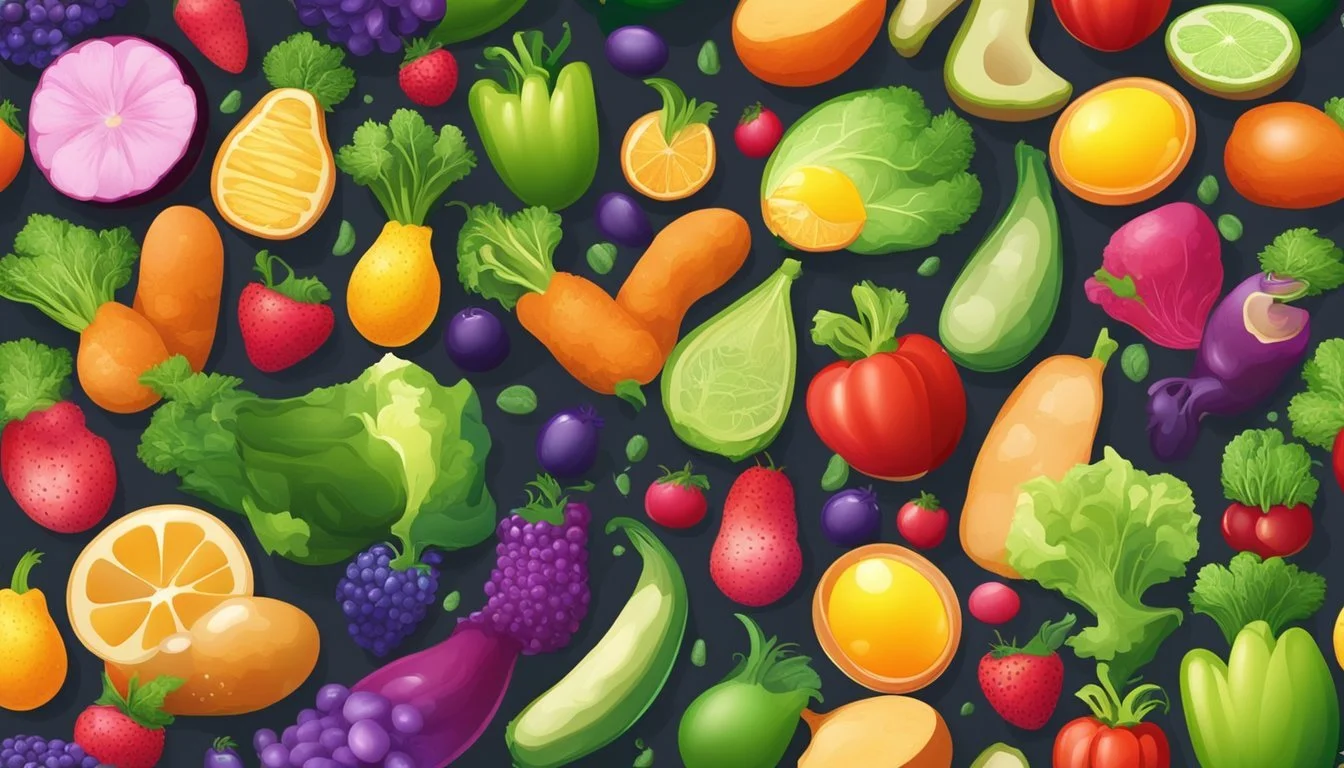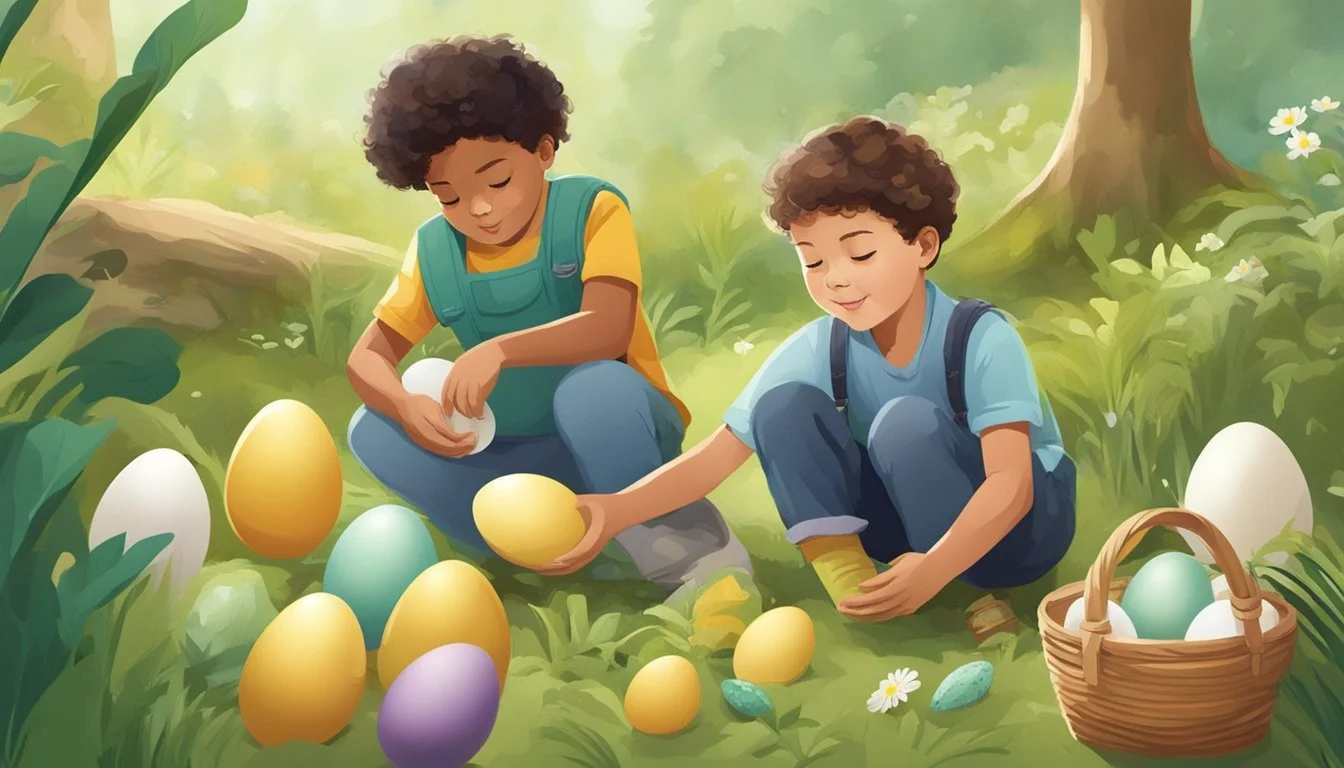Sustainable Easter
Embracing Eco-Friendly Celebration Traditions
Easter celebrations often bring joy and festivity, combining family traditions with the freshness of spring. However, these festivities can also come with a significant environmental footprint due to the use of plastic decorations, non-sustainable chocolate, and excessive packaging. To counteract this, a growing awareness of sustainable practices is leading many to seek Eco-Friendly methods to celebrate, reducing waste and supporting ethical production methods without diminishing the holiday spirit.
Incorporating Eco-Friendly practices into Easter can start with simple choices such as selecting ethical, low-waste candy and chocolates. As concerns about environmental impact and fair trade gain prominence, options that align with these values are increasingly available. Consumers are encouraged to look for products with minimal packaging or those that use recyclable or biodegradable materials. Additionally, supporting local businesses that engage in sustainable practices can help bolster community economies and reduce the carbon footprint associated with transportation.
Beyond consumables, Eco-Friendly Easter decorations and crafts offer a creative avenue for celebration. Swapping out plastic grass in Easter baskets for shredded newspaper or natural materials, making DIY decorations from recycled materials, or even growing real grass or plants can transform the holiday into a more environmentally conscious event. By mindfully selecting or creating items that are not only beautiful but also kind to the planet, individuals can set a positive example and enjoy festivities that align with a commitment to sustainability.
The Importance of Sustainability During Easter
Easter celebrations often come with an increased environmental footprint due to activities like egg decorating, basket filling, and festive decorations. This section examines the environmental considerations and advantages of adopting sustainable practices during Easter festivities.
Environmental Impact of Easter
Easter can significantly contribute to environmental stress through the mass consumption of plastic products and packaging, the high carbon footprint from non-local products, and the disposal of festive decorations. Traditional Easter practices often involve:
Plastic eggs and toys that aren't biodegradable
Excessive packaging for chocolate and candies
Disposable decorations that contribute to landfill waste
Adopting an eco-friendly Easter approach can mitigate some of these environmental concerns. For instance, choosing locally produced chocolates can reduce transportation carbon emissions, and using biodegradable materials for decorations can diminish waste.
Benefits of an Eco-Friendly Easter
The benefits of incorporating sustainable, ethical practices into Easter are manifold. Not only do they minimize negative environmental impact, but they also often result in a healthier and more community-oriented holiday. Key benefits include:
Reduced Waste: By opting for materials that are recyclable or compostable, one can significantly lower the amount of waste generated.
Support for Local Economies: Purchasing from local artisans and farmers bolsters the local economy and reduces transportation-related carbon emissions.
Health and Safety: Natural dyes and organic confections are healthier for both consumers and the environment.
Ethical Practices: Prioritizing products certified as fair-trade or ethical ensures that the items bought are sourced in a way that's better for people and the planet.
By emphasizing environmental stewardship and ethical considerations, individuals can enjoy a festive and heartfelt Easter while contributing positively to sustainability efforts.
Eco-Friendly Decorations and Crafts
In integrating eco-friendly practices into Easter celebrations, one can focus on using sustainable materials for decorations and crafts, and embrace the DIY spirit to create innovative decor ideas.
Choosing Sustainable Materials
When selecting materials for Easter crafts, it is important to prioritize those that are biodegradable, recyclable, or have been recycled. For instance:
Natural Fibers: Opt for cotton or wool yarn for projects like the pom-pom bunny, as they are more eco-friendly than synthetic fibers.
Wood: Use scrap wood or pallet boards for decorations like Easter bunny board art, ensuring to seal it for durability.
Natural Dye: For coloring eggs, natural dyes made from foods like beets, turmeric, or blueberries are preferred over synthetic dyes.
Construction Paper: If paper is necessary, use construction paper as it often comes from recycled materials and can be recycled again.
Materials like these not only reduce waste but also minimize the environmental footprint of your Easter festivities.
DIY Easter Decor Ideas
Creating decorations oneself is not only satisfying but also a means to ensure that the celebration is environmentally conscious. Here are specific ideas using eco-friendly materials:
Easter Egg Hunt: Instead of plastic grass, shred old newspapers or magazines for basket filler, which can later be recycled.
Easter Baskets: Fashion baskets out of natural materials or use biodegradable options. These can be repurposed each year or composted if no longer needed.
Garlands: Craft pom-pom bunny garlands using wool yarn, creating charming decorations that can be reused yearly.
By employing materials like these in various creative ways, individuals can enjoy a festive atmosphere while also adhering to sustainable practices.
Sustainable Easter Baskets
Easter baskets are a central part of the holiday celebration, but they often include materials that are not eco-friendly. Transitioning to sustainable easter baskets can be both simple and creative, ensuring a greener holiday without losing any of the festive fun.
Alternatives to Plastic Baskets
Wicker Baskets: These sturdy and reusable containers make excellent sustainable easter baskets. Unlike plastic baskets, wicker baskets can serve multiple purposes throughout the year and are biodegradable at the end of their lifespan.
Fabric Baskets: Baskets made from natural fabrics can be a colorful and eco-friendly option. They are often foldable, making them easy to store and re-use for multiple occasions.
Fillable Paper Eggs: Instead of plastic eggs, one can use fillable paper eggs for an egg hunt. They are compostable and can be easily crafted at home, adding a personalized touch to the celebration.
Eco-Friendly Filling Options
Shredded Paper: Instead of plastic grass, try using shredded paper. It's an excellent eco-friendly easter grass alternative that can be made from recycled paper, which later can be recycled again or composted.
Organic Materials: Items like straw, or even a small bed of living grass grown from wheatgrass seeds, can provide a natural look to an easter basket while being environmentally friendly.
Reusable Fabrics: For those looking for a creative touch, colorful fabric pieces can serve as both a decorative filling and a practical component that can be repurposed after Easter.
Ethical Easter Treats
Ethical eating during Easter doesn't just contribute to a healthier environment; it also ensures support for responsible farming practices. Focusing on fair trade and homemade options with organic ingredients can enhance the sustainability of Easter treats.
Choosing Fair Trade Chocolate
When selecting chocolate for Easter, fair trade options should be a top consideration. Fair trade chocolate is sourced in a way that emphasizes fair payment and working conditions for farmers. Here's what consumers should look for:
Fair Trade Certification: Certifications by organizations such as Fair Trade USA ensure that the chocolate has been produced under stringent standards.
Brand Commitment: Companies like Endangered Species Chocolate and Alter Eco are known for their dedication to ethical sourcing.
Local Impact: Purchasing from local businesses can also contribute to community sustainability.
Chocolate Options
Alter Eco: Known for a variety of chocolates, from truffles to bars, all fair trade certified.
Endangered Species Chocolate: Offers a range of chocolate bars, with donations to wildlife conservation.
Homemade Treats with Organic Ingredients
Creating Easter treats at home allows for control over ingredients, ensuring they are organic, non-GMO, and sustainably sourced. Key components for homemade treats include:
Organic Veggies and Fruits: Incorporating vegetables and fruits is not only healthier but also caters to dietary preferences.
Nuts and Seeds: Opt for organic and non-GMO options to add a nutritious crunch to sweets.
Recipe Ideas
Organic Fruit Bars: Combine organic fruits with nuts and seeds for a healthy snack.
Veggie Chocolates: Melt fair trade chocolate and dip organic veggies for a sweet and crunchy treat.
Natural Egg Dyeing Techniques
Eco-friendly egg dyeing embraces the use of vegetables, fruits, and spices to create natural dyes. These methods are not only non-toxic but also allow for a creative and environmentally conscious approach to Easter traditions.
Using Fruits and Vegetables
Fruits and vegetables can be potent sources of color for Easter eggs. For instance, beet juice yields a deep red or pink hue. One can chop beets and boil them in water for about 20 to 30 minutes. The procedure is simple: after boiling, the liquid should be strained into a bowl to be used as a dye bath.
Similarly, red cabbage is a surprising source for a vibrant blue color. Eggs soaked in boiled red cabbage water emerge with a distinctive blue tone. It generally involves the following steps:
Chop red cabbage into pieces.
Boil chopped cabbage in water until the desired color is released.
Strain the mixture to collect the dye.
Creating Dyes with Spices
Spices like turmeric and paprika can produce vibrant dyes for Easter eggs. A golden-yellow shade is achievable via the following instructions:
Add 2 tablespoons of turmeric powder to 1 cup of boiling water.
Stir the mixture and allow it to simmer to release the dye.
Once cooled, strain the dye for use.
To achieve a pink-red color, paprika functions as an effective dyeing agent. Infusing boiling water with paprika for 20-30 minutes will result in a red-hued dye. After straining, eggs can be submerged in the dye to attain the desired color.
Responsible Easter Egg Hunts
Easter egg hunts are a highlight for many children and adults during the Easter celebration. To make this tradition more sustainable, one can use eco-friendly materials and avoid unnecessary plastic waste.
Avoiding Plastic Eggs
Plastic eggs are commonly used for Easter egg hunts but have a negative environmental impact due to their non-biodegradable nature. Alternatives to plastic eggs include:
Wooden eggs: Wooden eggs can be painted, decorated, and reused each year. They can be sourced from sustainable forests, making them a more eco-friendly option.
Real eggs: Using real eggs that have been hard-boiled and naturally dyed minimizes waste, as they are biodegradable and can be eaten after the hunt.
Paper eggs: Craft eggs made from recycled paper materials provide an opportunity for creativity while also being compostable.
To make sure these eco-friendly alternatives are utilitarian, here are specific steps to follow:
Choose reusable materials: Opt for eggs that can be opened and filled with treats, and made of sustainable materials.
Involve children in decoration: Encourage the use of natural dyes from fruits, vegetables, or spices to color the eggs.
Educate participants: Make it a learning opportunity to teach about sustainability and the importance of eco-friendly practices.
Incorporating Natural Elements
Incorporating natural elements into Easter egg hunts not only adds an authentic touch but also promotes a sustainable approach. The use of organic materials is greatly beneficial to the environment. Here are ways to integrate nature into egg hunts:
Natural basket fillers: Use shredded newspapers or magazines as a grass substitute in Easter baskets. Ensure these items are recycled after use.
Soil and seed baskets: Instead of traditional plastic grass, fill baskets with a layer of soil and wheatgrass seeds. This introduces a living element that can be grown and reused.
To responsibly include natural elements:
Prepare in advance: Plan and plant grass-filled baskets a few weeks before Easter to ensure they are ready for the day.
Encourage a no-litter policy: Remind participants to collect all materials after the hunt to maintain cleanliness and respect for the natural environment.
By focusing on these practices, Easter egg hunts become not only entertaining but also environmentally responsible.
Waste Reduction and Recycling
Waste reduction and recycling during Easter celebrations can significantly minimize the environmental impact of the holiday. By focusing on composting organic waste and creatively reusing and upcycling items, individuals can decrease the amount of waste sent to landfills and prevent plastic and other materials from polluting waterways.
Composting Easter Leftovers
Composting is a key method for dealing with organic food waste from Easter festivities. Post-holiday food scraps such as vegetable peels, eggshells, and uneaten food can be turned into nutrient-rich compost rather than contributing to landfill mass. Using compostable materials for Easter egg hunts, such as eco grass, ensures these items can break down naturally. Households are encouraged to start a compost bin if they haven't already, as it can become an ongoing effort beyond the Easter season.
Tables for Composting Easter Leftovers:
Suitable for Composting Not Suitable for Composting Vegetable and fruit scraps Meat and dairy products Eggshells Greasy food scraps Coffee grounds and paper filters Cooked food containing oil Eco grass and other paper products Plastic wrappers and foils
Reusing and Upcycling Items
Easter offers multiple opportunities to reuse and upcycle items to reduce unnecessary waste. Rather than buying new decorations or baskets each year, families can create a tradition of reusing the same items. Baskets can be filled with natural materials like compostable paper shreds or homemade eco grass instead of plastic. Likewise, using real eggs for decorating and hunting activities eliminates the need for plastic waste. Crafting decorations from recyclable materials not only reduces waste but also adds a personal touch to the celebration.
Bullet Points for Reusing and Upcycling:
Baskets and decorations can be stored and reused each year, thus minimizing the purchase of new items.
Natural dye can be used for coloring eggs, steering clear of chemical dyes which may be harmful to both health and environment.
Consumable or plantable Easter gifts cut down on the quantity of plastic waste that might otherwise end up in waterways or landfills.
Supporting Local and Small Businesses
Purchasing from local and small businesses during Easter not only contributes to a more sustainable holiday but also boosts community well-being. This section underscores how opting for local purchases can benefit both the local economy and the environment.
Benefits of Buying Local
Sustainability: When consumers choose local products, such as coffee or tea, they often reduce the environmental impact associated with transportation and packaging. Local small businesses tend to adopt more sustainable ways of operating, like using fewer preservatives and recyclable materials.
Reduced Carbon Footprint: Transportation distances are shorter, which lowers the carbon emissions from shipping goods.
Fresher Products: Local wares, particularly food items, are often fresher and therefore tastier and potentially more nutritious.
Impact on the Local Economy
Economic Growth: Money spent at local businesses stays within the community and contributes to its economic resilience.
Support for Entrepreneurs: Patronizing local establishments, especially those supplying Easter-related products, helps entrepreneurs thrive.
Job Creation: Local businesses are significant employers within the community, and by supporting them, consumers help in sustaining and creating jobs.
Purchasing from small and local businesses can imbue an Easter celebration with added purpose, knowing that each purchase helps to nurture the local economy and environment.
Conclusion
Adopting sustainable practices during Easter can lead to a more environmentally friendly celebration. Individuals have the power to make significant changes through conscious choices, starting with sustainable decorations and eco-friendly crafts. Utilizing materials that are recyclable, biodegradable, or repurposed limits the impact of festive activities on the planet.
Celebrators can craft their baskets from recyclable or repurposed materials, reducing the need for single-use plastics. By opting for candy and chocolates with minimal packaging, or those sourced from local businesses with sustainable methods, they support both the community and ecological balance.
Incorporating organic elements into decorations, such as using real grass or seeds in Easter baskets, provides a natural touch to the festivities while avoiding synthetic materials. As for the Easter eggs, using natural dyes from vegetables or fruits adds a creative twist and eliminates the use of potentially harmful chemicals.
They can continue to make a difference by educating others on the importance of sustainability during Easter and every day. When these eco-friendly practices become a communal effort, the cumulative effect on environmental conservation is magnified.
In summary, celebrating Easter sustainably is achieved by being mindful of one's choices in decorations, crafts, and consumables. It's a celebration that honors both tradition and the environment, proving that joyous occasions can be both festive and kind to the earth.







